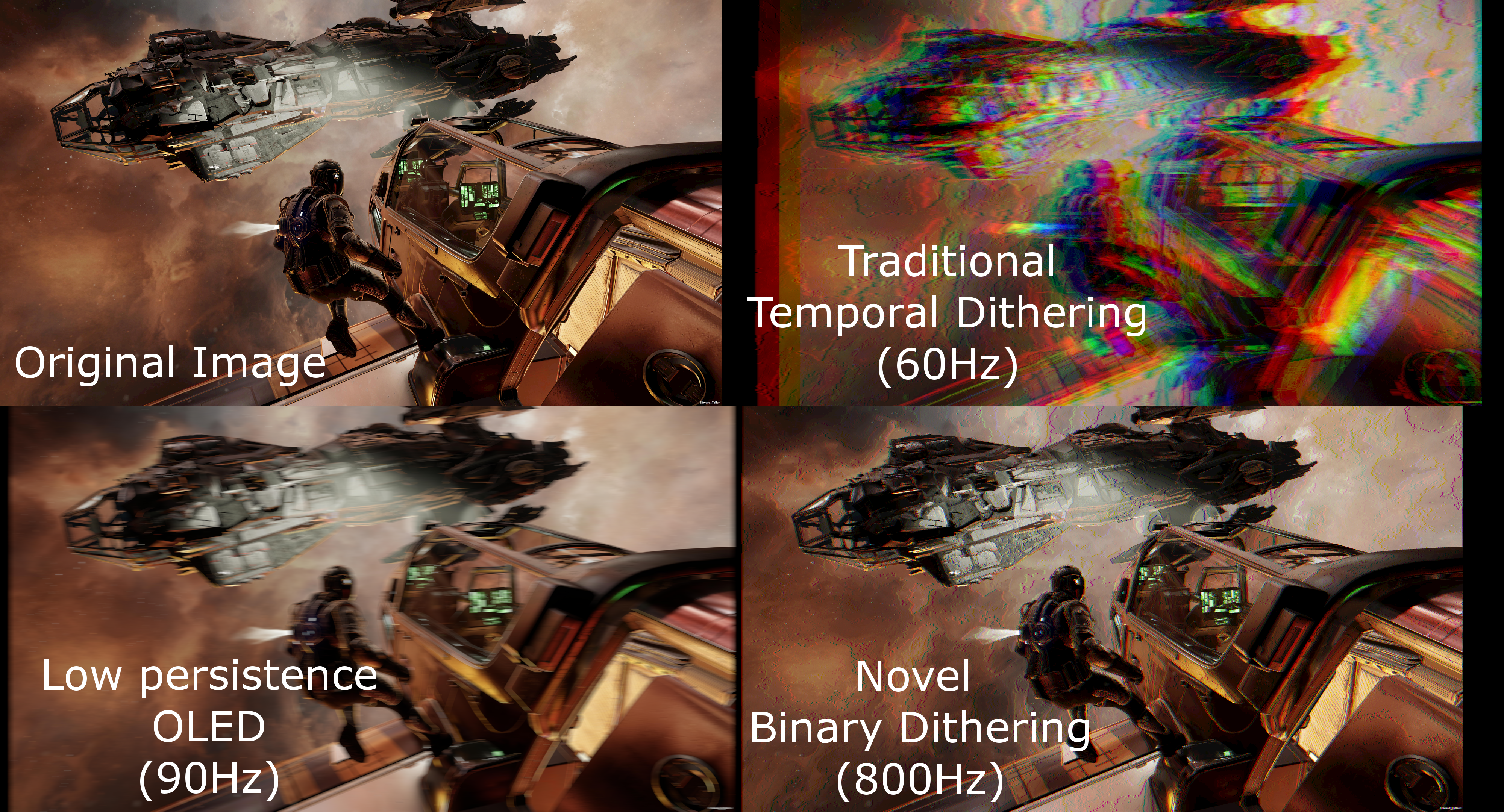This project is an investigation into display motion performance. Experiments using a prototype and computer modelling have demonstrated that fast switching binary displays can potentially display colour images at over 500Hz using novel techniques, greatly benefiting applications such as virtual reality by reducing latency and blurring.
StudentSupervisor |
Project overview
This PhD project began as an investigation into the potential of Ferroelectric Liquid Crystal (FLC) displays, finding that they could theoretically outperform other LCD types, with three times the lighting efficiency and much higher maximum refresh rates. This high performance requires a novel exploitation of the binary switching of FLC pixels and precisely synchronized illumination. A model was developed to simulate and assess the performance of all possible binary dithering schemes for a generic binary-type display. This included the first attempt to define and quantify the contributions to perceptual errors resulting from relative motion between the retina and display during the emission of an image. These motion errors are critical for Virtual Reality applications, which are predicted to become a significant market in the near future.
The theory behind using a binary display to reproduce colour also applies to digital projectors, which use micromirror arrays to modulate light. A digital projection development platform has been acquired, and is being used to implement and verify the performance of novel binary dithering schemes. These schemes could be used in the near term future in high performance projection displays and head mounted displays, and potentially in the longer term for FLC displays. George is working with Cambridge Enterprise to pursue commercialisation of this technology.

This project is being undertaken within the Department of Engineering at the University of Cambridge.

